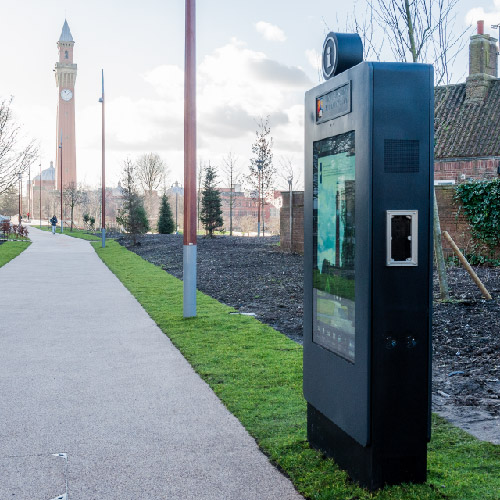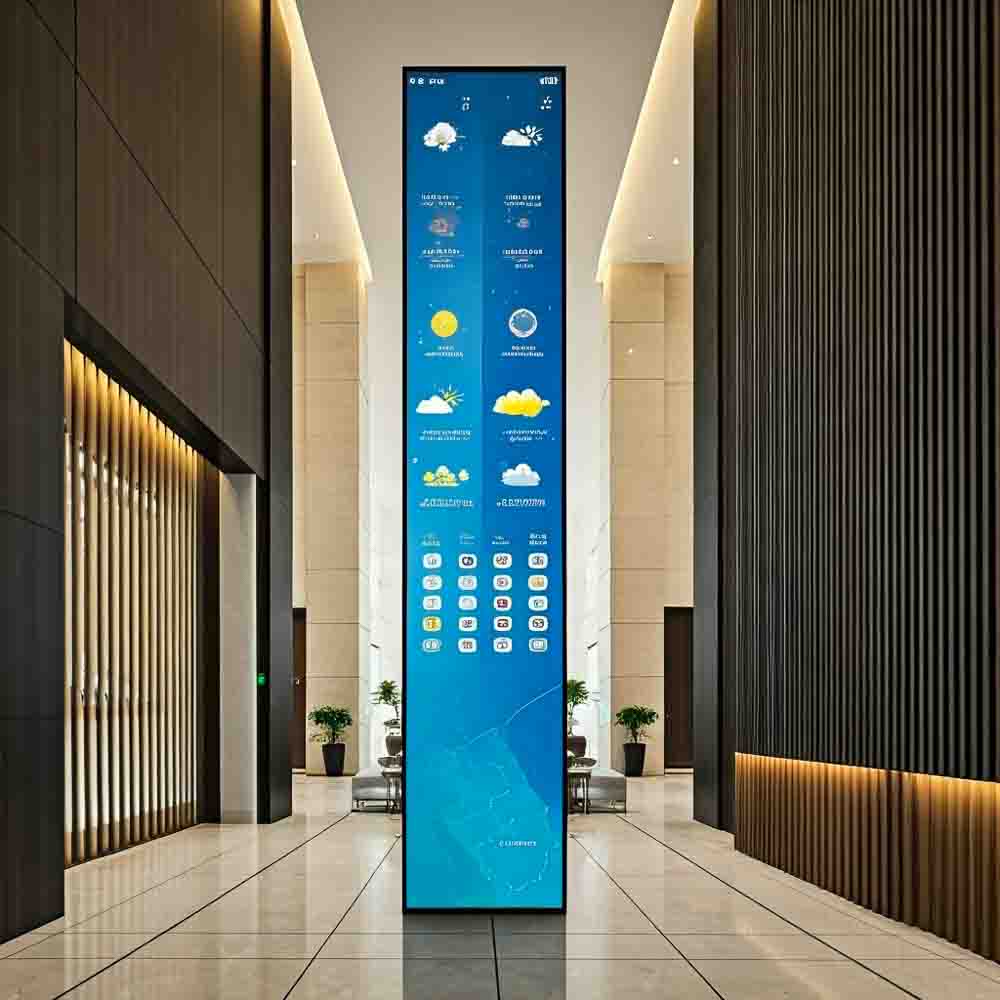Digital signage uses electronic displays, such as LCD, OLED, and QLED screens, to broadcast multimedia content. The content can include text, video, images, animations, access to websites, and even games. When positioned correctly, the adaptability and real-time update capabilities of digital signs make them powerful tools for a range of industries and organisations to convey information and communicate messages effectively.
Digital signs have been increasing in popularity, with the digital signage market predicted to grow to $37.1billion by 2027.
How does digital signage work?
Using screens for advertising goes back as far as the 70’s when tape cassettes of advertisements would be played in retail stores. As technology evolved, display screens could be connected to a computer, or a USB stick would provide the content for displaying, until cloud-based content management systems enabled real-time management.
Now, most digital signs operate on a network of connected displays that are controlled by a central management system online. This gives the user control over multiple displays in different locations simultaneously. The content management software enables users to create, schedule, and modify content and can be integrated with databases and reporting software. By using cloud-based software, content can be managed remotely and adapt quickly to real-time situations.
Contrary to static signage, digital signage can also be interactive and include touch screens, cameras and motion sensors that actively engage with users and create memorable experiences.
What are the benefits of digital signage?
Digital signage benefits both the organisations who deploy the signage, and the users who interact with them.
From a business perspective, statistics and case studies prove that digital signage is a very effective method of advertising. As well as capturing more views than static displays, digital signage has high recall and audience engagement rates. These factors lead to an increase in sales and when digital signage replaces paper signs, has a positive impact on the environment too.
End users benefit from digital signage with fun and memorable interactions and are more likely to remember relevant advertisements that matter to them.
What industries already use digital signage?
Digital signage has been implemented across the globe in a wide range of industries including, healthcare, hospitality, education, banking, and retail. It’s used to enhance customer experiences with visually appealing displays, engaging content, and information dissemination, as well as providing customer support, wayfinding assistance, and accessibility options. Digital signage is used in transport hubs to display travel updates and at tourism attractions to collect visitor feedback.
The cope of digital signage makes it a highly customisable and affordable signage option, even for small businesses.



Is digital signage better than static signage?
Neither type of signage is better than the other overall, as both types have a place in wayfinding and advertising, working together to provide a seamless customer experience.
Digital signage has ongoing running costs, for example the software and power, so to convert all wayfinding signage to digital screens, when static signage is just as effective, wouldn’t be recommended.
In a hotel for example, the room numbers and floor number signs can be static, there is no need for them to be digital. For the most effective wayfinding, these static signs should be well-made with premium materials, easy to read, and in suitable positions.
However, to further enhance the customer experience, digital signage in hotels can be used to display information like breakfast times and changing menu items. They may also include the facilities to book taxis or tell guests which route to their room is the most direct.
Digital signs are considered to be more visible and effective in shopping environments than static signs when it comes to advertising, however wayfinding and outdoor signs are more effective if they are static.
Signage companies such as xsign, make recommendations for different types of signage depending on the needs of our clients, budgets, purpose, and environments.
What are the challenges of implementing digital signage?
Digital signage does present some challenges, despite the numerous benefits, and it is important to recognise and prepare for these.
The installation process may include rewiring electrics or removing and replacing floors, walls, or ceilings. Once set up, technical issues such as connectivity problems and hardware malfunctions can disrupt the displays.
Additionally, managing content effectively across multiple displays requires a robust content strategy and management system. Cybersecurity should also be considered, especially if the signage will have a function that includes collecting personal data.
Although future technical problems cannot be foreseen, a well-planned signage rollout addresses most challenges ahead of time and mitigates disruptions.
Digital signage offers a versatile and impactful signage solution that enhances communication and improves the customer experience. To explore more about how digital signage can transform your business, contact our expert digital signage team now.


